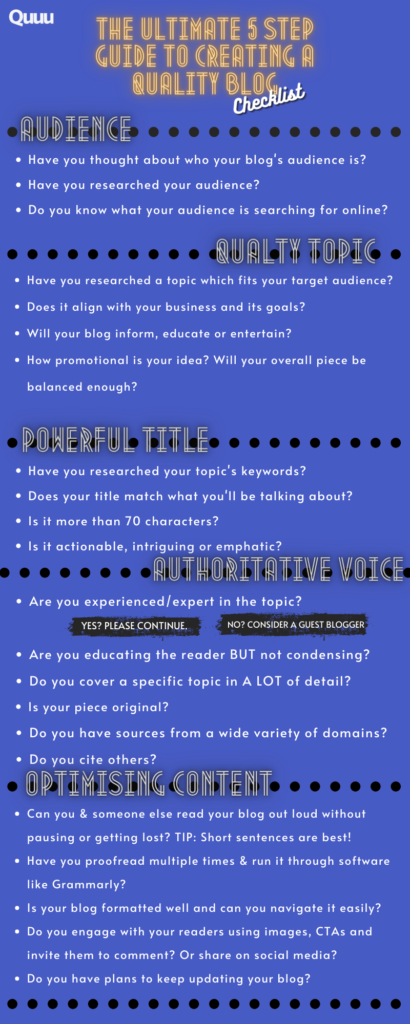The phrase “quality blog” gets used time and time again, but do you know how to create one?
Well, in this blog, we’ll tell you five steps to help you create a quality blog to help your business and boost web traffic to your domain!
So, open your notes page and get ready to learn how to:
- Understand your blog’s audience
- Select your blog’s topic
- Create an attention-grabbing headline
- Format your blog correctly and create an enticing web design
- Optimise your post for long term engagement
We even include some examples and case studies of blogs we think are high-quality blog posts!
Why is having a quality blog so important
Blogging is a critical component of a successful content marketing strategy. Bloggers use them to talk about many things, including sharing what interests them, educating others, and building a network.
Blogs are also used to improve your writing skill, earn a living, and even help market your business.
Blogging sounds like a great idea, right? Why doesn’t everyone have a blog?

Well, most of the world does seem to have a blog. As of 2022, GrowthBadger stated there’s currently more than 600 million blogs on the internet out of the 1.7 billion websites. In fact, so many people are creating content that, according to Envisage, it’s estimated 4.4 million blogs are published every day. So, how do you get your blog to stand out in the crowd?
By writing a quality blog full of high-quality content! Of course, here comes the next and ultimate question – how do you write a quality blog? Well, here at Quuu, it’s a question we get asked a lot. Especially when people want to know how well they can expect their blog to perform in a promotion with us.
We’re not gonna lie; writing a quality blog post is hard, but it is achievable if you know what you’re doing. So, stick around; whether you’re a Padawan first-time blogger or a well-experienced copywriter, we’re going to give you the tips and tools to make you a star… of the blog world.

1) Consider your blog’s audience
Think about who your blog’s audience is
One of the first things you should consider before writing any blog is noting who your audience is. If you don’t know who you’re writing for, you’ll be firing your blog into the ether with only the hope that your blog will reach the right people.
Treat your blog like you would your business. For instance, you wouldn’t start trying to sell a product without researching your target audience/buyer persona. The same strategy should be applied when you’re writing a blog!
If you start with the right blog-posting strategy, your blog’s content should be made with the intention of capturing your target audience to help generate more leads for your business.
Trust us, once you’ve established who your audience is (and only then), you can continue with your journey to quality blog success.
Write for your blog’s audience and interests
This next step depends on how established your blog is.
If you already have a blog, the best way to find who your audience is and what they want to read about is to look at your existing business, your current website traffic, and blog comments.
On the other hand, if your blog is just starting, you should think about what topics you’re interested in exploring and then look to see whether your proposed audience’s interests match this. A great way to find these out is to look at others in your industry and check out Quora and Facebook Groups.
Making sure you’re writing for your audience will help you write better-focused content, keep your audience coming back, and have an audience who are more willing to buy from you and ultimately help you become a successful blog.

Perhaps, the most important benefit of knowing your blog’s audience comes after writing, in your blog’s performance. As Orbit Media states, “80% of bloggers report that blogging drives results.” Having a target audience will help your blog’s response, shareability, and, ultimately blog traffic. This is where your audience’s interests impact your SEO strategy.
Another way to choose what topic you’ll be talking about is to consider what questions your audience is asking in Google. It is then your job to make sure your blog offers a solution or an answer to these questions.
People mostly use search engines to find an answer, and it’s the search engine’s job to deliver that answer. If you then have content that matches an answer to this question, you’re more likely to appear in Google search results and attract more traffic to your website!
Blogs are fantastic for generating brand awareness!
As BrightEdge explains, “It is often through blog content that you first entice people to your site and start to build your brand’s audience.”
Therefore, your ‘why’ should answer what your target audience is looking for when they’re searching for information online and through Google.
In the example below, Propel is a company that helps grow its customer’s website traffic. So it’s likely their customers want to know about all things related to content and digital marketing. As a result, they’ve created the following article about what pages your website should have.

2) Select a quality blog topic
Using your audience’s interests/questions to form a blog post
Now that you know what your audience is searching for, you can decide on what topic you’ll be writing about and how best to present it to your audience. Overall, establishing this makes it easier to navigate writing the rest of the blog.
Personally, I find having an audience in mind can really help me conquer writer’s block as I imagine myself talking to the reader!
1) Your blog’s topic should match your business goals
Once you know your audience, you’ll know if your blog ideas are aligned with your business’s objectives. For instance, your digital marketing audience won’t want a blog on how to make the perfect brownies – well, they might, but they probably already have a separate blog for that.

2) You need to think about the best structure and medium to present your blog in
Having an audience helps you know what type of blog you should write. For example, a short listicle made entirely of memes probably won’t help you explain in-depth SEO analysis to your audience, but it’s great for 10 top tips to round up.
Make sure your post is valuable to your audience
So, your blog needs to deliver an answer to your target audience. But you also need to consider the effect it’s going to have on your reader.
Talking about a topic that will interest your blog viewers isn’t enough. You need to think about what you are going to offer your audience.
As Hubspot informs, your blog exists to help your readers learn new things, be entertained, and stay connected with the professional network.
As we say in Quuu Promote’s quality criteria, content must help, entertain inform, or inspire.
If your blog doesn’t offer information, entertainment, or advice to your readers … I’m sorry, hun, but you ain’t writing quality content! And, while one person out there on the internet might appreciate your rambling, the majority won’t.
So, when you’re writing your content think: “Is this an actionable blog?” Or “Does my blog offer readers a specific solution to their problems?”
For example, in this blog, we don’t just tell you what a quality blog is. We give actionable tips on how to get started, a handy checklist, formatting infographic, & examples!
Another key tip. Content shouldn’t only be promotional.
While comparative reviews are great, interviews are useful, and personal success stories work… totally promotional information turns your reader off.
Here at Quuu Promote, we often say a good blog post is 20% promotional and 80% informative.

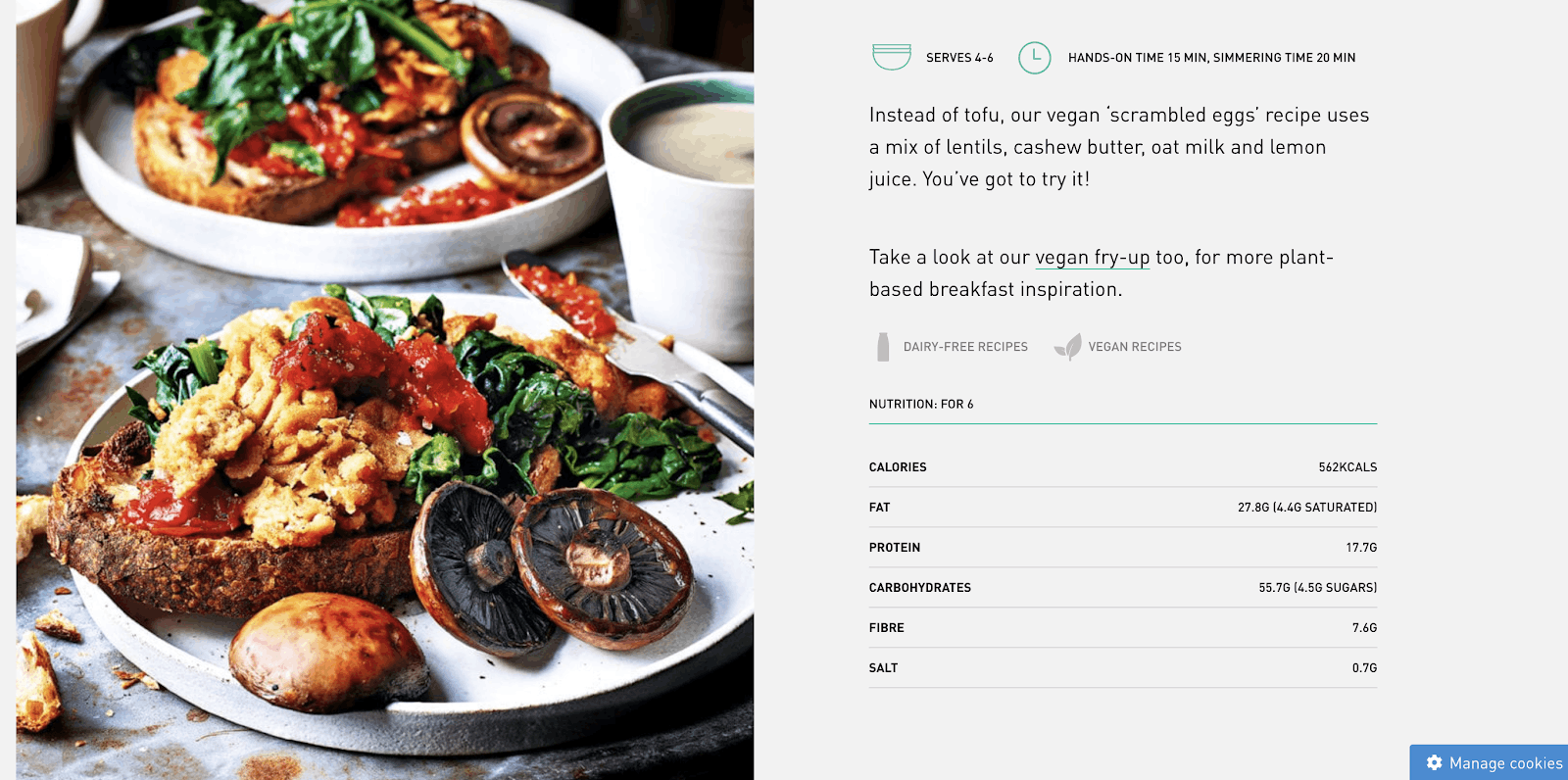

Here you can see an article from a food website, Delicious Magazine. This blog is giving the reader advice and information in the form of a recipe post, using images to illustrate their recipe. In addition to this, there is a promotional subscription bar. However, this is considerably smaller than the rest of the blog’s informative tone.
3) Create a powerful title
If there’s a tonne of content out there, you’ve gotta stand out and show that you’re worth it, worth a little click from Google, that is!
How can you do this? Well, one way is to make sure you’ve got a worthwhile title.
Why? To make sure your content is seen!
Optimize your blog title for SEO using keywords
You need to make sure your blog is seen by both search engines and readers looking for an answer to their questions!
You can make sure you’re seen by using keywords in your blog title. Creating a headline that uses keywords related to your chosen topic will help the reader and search engines know exactly what is in your blog.
To add a keyword to your title, focus on keywords that you know your audience is already searching for (think back to your research earlier) and then look into the search volume for those keywords.

You can find your keywords using many different approaches. The simplest way is to find related keywords in a Google search.
Or if you’re looking for something a little more technical, there are also many keyword tools such as Google Keyword Planner and Keyword Magic Tool from SemRush.
It’s always good to focus on a keyword to create a working title and then go back to it after. For example, this blog was simply called “How to write a quality blog”, the keyword being quality blog at the start of this blog writing process.
PS. you should also utilize these keywords throughout your meta description, link text, headings, and URL. We’ll tell you more about this later!
Make sure your title matches what your blog is about
Creating a title that effectively sums up what your blog is about is useful in many ways.
Firstly, a clear title gives total transparency to your readers. If your title is clear, it leaves no room for uncertainty for the reader once you’ve grabbed their attention. If you don’t fool them from the get-go for the sake of clickbait, they’re more likely to trust you and your content’s value.
Secondly, it gives an article structure. Having a clear title helps structure the article and helps frame what information you’ll be talking about – this can be crucial both during your writing stage and also very important for SEO and grabbing Google’s attention in search engine result pages (SERP).
Use your title to make your blog stand out
In the world of content marketing, being seen in a world overrun with content is hard, and as David Oglivy said, “On the average, five times as many people read the headline as read the body copy.” So, your title’s got to be good.
Try to think like an old-school journalist, and remember you’ve gotta have a catchy headline to grab your readers and audience.
If most readers can only be bothered to read your title, they can’t be bothered to read a long one, so keep your titles short.
Ideally, a title should be no greater than 70 characters. If it’s over this, you’ve got less chance of being picked up in SERP. Remember you’re a writer so your title should be engaging/entertaining!
You can use catchy phrases, relevant phrases to your industry and even add some alliteration – ultimately you wanna stand out. Either way, your title should be intriguing or emphatic.
Here’s a great example from Articulate Marketing, a Quuu Promote user:
Here you can see Articulate Marketing’s title clearly states what they’re going to be talking about in this article. It’s short enough that you’ll want to read it but still long enough to include enough information for both a reader and Google/search engines to search.
In addition to this, it’s engaging the reader with an actionable opening phrase “How to…”. While we don’t know their content marketing strategy, you could assume their keyword is “social selling”, therefore making this piece also suitable for SEO.

What tools and plugins can help you create outstanding heading ideas? Keyword Tool, Uber Suggest, Google Adwords and CoSchedule.
4) Create authoritative blog content
Your blog needs to have an authoritative voice
If you want your content to be considered quality, you have to offer something to the reader that most other people in the world can’t, for instance, an authoritative voice on the topic.
It’s crucial you only write about what you’re qualified to talk about, and while in most other industries, you’ll often hear the phrase fake it till you make it. When it comes to blogging, don’t fake it, only write down the truth.
Ensuring you have an authoritative voice also tends to be easier if you’re writing for your blog’s target audience.
Having an authoritative voice on the subject can also help establish you and your business as a thought leader in your industry.
Don’t worry. If you’re sure there’s a topic that would perform well on your blog and resonate with your audience, but you’re not an expert, you could always consider getting a guest blogger!
Guest blogging is nothing to be ashamed of, as 60% of bloggers write guest posts for other blogs.
It’s important to note, while you want to make sure you sound knowledgeable, you should never ever speak down to your readers, you want to empower them.
As Neil Patel says:
Your blog needs to be well-researched and include backlinks
In addition to this, you should make sure your blog covers a specific topic in a lot of detail. We’re talking about accurate reporting and a tonne of other information!
Even if you’re a knowledgeable copywriter, you’ll need to research your work and cite others – when you do this, you must backlink them!
Backlinks are great for letting others know you’ve sourced your information, you aren’t spreading fake news and they’re great for search engine algorithms.
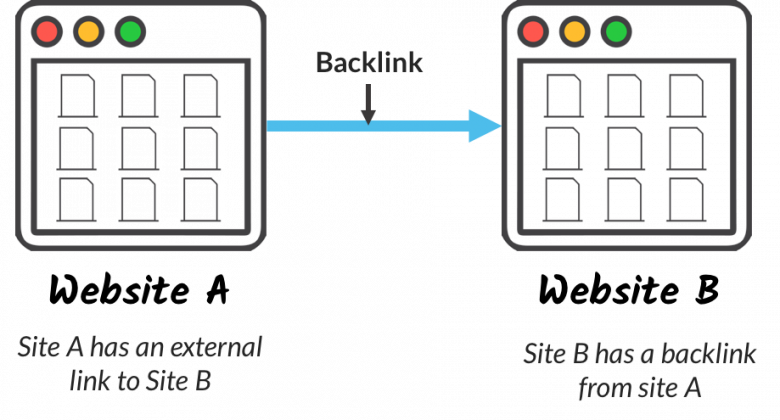
Not only will your readers be more impressed by someone who knows their stuff and has worked hard to deliver a piece which stands out, they may even reward your efforts and build a backlink to your information.
Google will also reward you too! Original content stands a much better chance of rating higher in a Google search and ultimately helps your SEO goals and content marketing strategy.
For example, in this image here from Shane Barker’s post on Social Hire you can see within the first three sentences he’s already included three backlinks to three different domains giving evidence for his knowledge of the subject.
Using backlinks from the start of this piece shows his readers he both understands this subject well and has done the research!
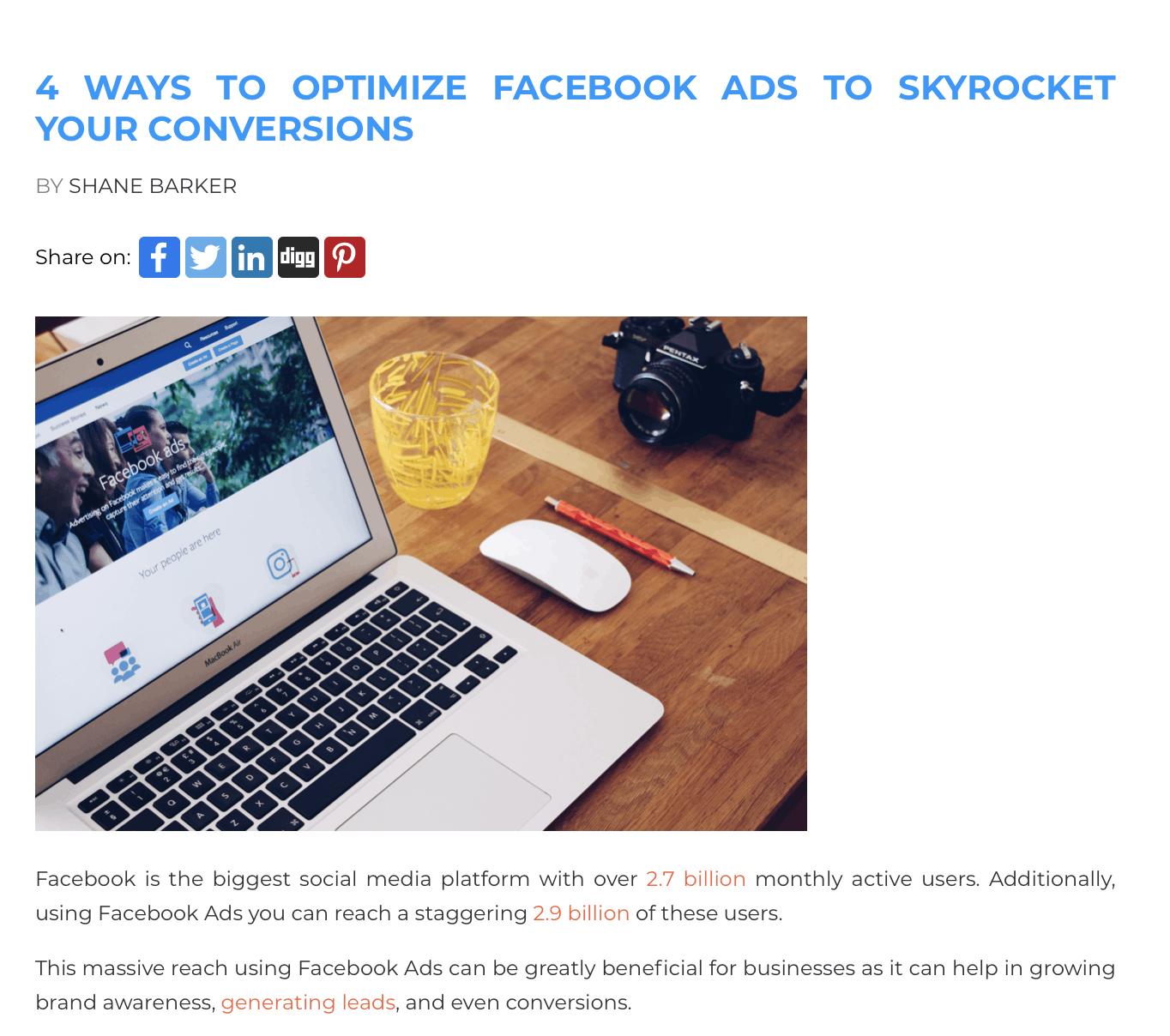
Ultimately, an authoritative writer’s importance means they’ll be providing information that’s actually valuable, which is important in a world saturated with content.
Once you’ve established your importance and authority as a writer, you also want to make sure you have a fresh, original post.
5) Optimize your content
Create a readable blog
Once you’ve established the blog topic and content, the next thing you’ll need to consider is improving its readability.
There are a few things to consider about readability when writing a blog post:
1) Keep your content comprehensive and concise
When you are writing your blog, it’s important to use as clean and sleek wording as possible.
Writing a blog isn’t a creative writing exercise. Please put your haikus, semicolons, and waffly language away! Make sure you write in sentences that are as short, concise, and to the point as possible.
Of course, you can still have a tone of voice as a writer, you should always show off your writing style and voice. It’s also a good thing to add originality and a personality to this content filled world.
You know, make sure you’re writing “good craic” as the Irish, and also Geordie (like me) say!

But, it’s best to keep it as easy to read as possible. For instance, the average reading age of the UK population is 9 years and the average American has a reading age of 7th – 8th grade.
So, if you want to make sure your content is accessible and reached by as many people as possible, the simpler your writing is, the better.
There are always great tools like Clearscope to help you with your blog’s readability, plus this app is also great for all things SEO related.
2) “Know how to use correct grammar” or, as you should say, “Know how to use grammar correctly”
This next tip shouldn’t come as a shock to you, but we’ll say it again for emphasis. If you want to write a high-quality blog, you need to use the correct and appropriate grammar!
Using the correct grammar lets your reader know you’re an experienced writer, makes it easy to read, and “helps search engines have less difficulty reading your text”. The Google’s SEO starter guide suggests you should avoid “writing sloppy text with many spelling and grammatical mistakes.”
Grammar can even save lives.

If you struggle with grammar or find you often need a little help proofreading when you’re finished you might want to check out Grammarly.
Presentation is essential
Finally, whether you’re writing long-form content or a short snappy how-to guide, content from a high-quality blog must be formatted correctly!
The look of your blog, combined with your title, form your blog’s sales pitch to convince a reader to stay on your page. Remember, most people won’t even bother reading your whole blog.
You’ve got to make it easy for readers to view your content if you want your blog to be successful. The more aesthetically pleasing your blog is, the longer people will stick around. Plus, no one wants to look at a dull and grim-looking “wall of death”.
As CoSchedule mentions in their blog, sentences should be 25 words or less.
Make your blog a dream to read and quick to scan by:
> Utilising headings & subheadings
> Using call to actions
> Including images
> Having a handy sidebar
> Using stunning-looking website design.
Here’s a handy guide we made to help you understand how to correctly format a successful blog post.
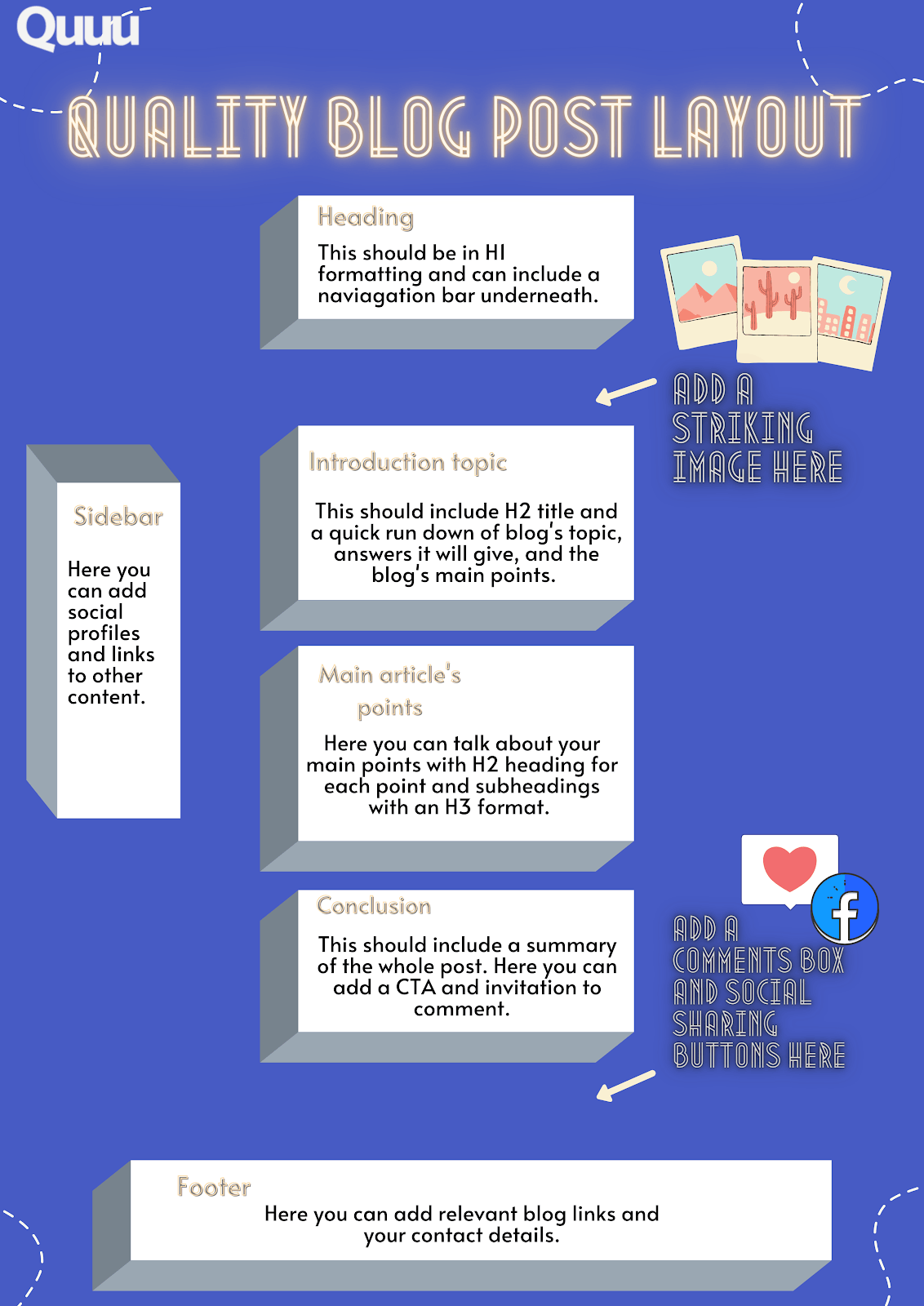
Extra tip: if you’re using a common CMS like WordPress, creating a visually appealing web design is pretty easy!
Keep your audience engaged
Once you’ve got all the blog housekeeping in order from above, it’s important to consider how entertaining and engaging your piece is.
Firstly, your engagement needs to focus on keeping the reader on your blog’s page.
If your reader clicked on your page, they want to be there, but they also want to leave as quickly as possible.
I’s your job as a blogger to make sure you give them enough thought-provoking content to stick around. Consider adding images, backlinks, videos, and even music where appropriate to further add to your discussion. And better yet, infographics are great for describing things when words fail you.
Here’s a great example from Buffer’s post on how best to use their scheduler. In this post, Buffer uses a gif demonstration which is both informative and entertaining!
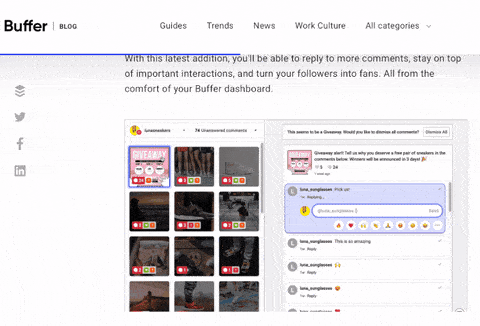
Consider where you want your blog to be next year
Another way to assess whether your content is engaging, is to think about your content’s destiny, “preparing it for a successful life” after reading it.
Don’t forget to write a meta description for your blog post (around 160 characters) and also add alt-text to your pictures.
The engagement doesn’t end when you’ve finished writing your blog post. You should also include a call to action (CTA) for your audience and invite them to leave comments.
Actions such as these will help keep your audience connected and keep the ‘content’ alive for as long as possible.
In addition to this, you should continuously update your website’s blog as it’s this part of your website your readers will most frequently visit, and this is key for any content marketing strategy when blogging.
Updating your blogs can also help with your rating in Google or any other search engine. Updating blogs has proven to be a great digital marketing strategy for startups and small businesses.
Conclusion
There you have it. A quality blog should have keywords, backlinks, good grammar, engagement, personality, and even gifs?!
Think you’ll remember all that? Well, don’t worry we created this handy checklist to help you out with your next blog post.
Once you’ve created your quality blog post, you may want to consider checking out Quuu Promote and getting your work shared with thousands of our Quuu users globally.
Don’t forget to comment below if there’s anything you think we’ve missed out in this post!
